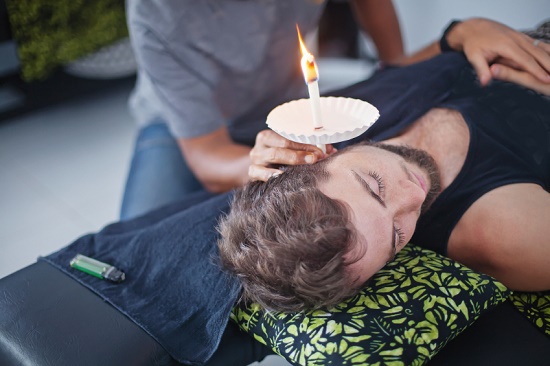
Our ears may be our most mistreated body part. We pierce them, subject them to deafening noise, stuff cotton swabs inside them, and burn them with ear candling. Despite supplying us with one of our most vital senses, we seldom give our ears, or our hearing, much appreciation or thought.
That is, right until there are problems. After that, we comprehend just how crucial healthy hearing really is—and how we should have practiced proper ear care earlier. The trick is to recognize this before the harm is done.
If you desire to avoid problems and protect your hearing, stay away from these 4 hazardous practices.
1. Ear Candling
Ear candling is a method of eliminating earwax, and also, as one researcher put it, “the triumph of ignorance over science.”
Here’s how ear candling is carried out. One end of a thin tube made of cotton and beeswax is placed into the ear. The other end is set on fire, which purportedly creates a vacuum of negative pressure that sucks earwax up into the tube.
Except that it does not, for two reasons.
First, the ear candle doesn’t generate negative pressure. As expressed by Lisa M.L. Dryer, MD, earwax is sticky, so even if negative pressure was created, the pressure required to suck up earwax would end up rupturing the eardrum.
Second, although the wax and ash resemble earwax, no earwax is in fact discovered within the ear candle after the therapy. Clinical psychologist Philip Kaushall tested this by burning some ear candles the conventional way and burning other candles without inserting them into the ear. The residue was exactly the same for both groups.
Ear candling is also harmful and is strongly opposed by both the FDA and the American Academy of Otolaryngology (physicians specializing in the ear, nose, and throat), if you need any other reasons not to do it.
2. Using cotton swabs to clean your ears
We’ve covered this in other articles, but inserting any foreign object into your ear only pushes the earwax against the eardrum, generating an impaction and potentially a ruptured eardrum and hearing loss.
Your earwax is made up of advantageous antibacterial and lubricating characteristics, and is organically eliminated by the normal movements of the jaw (from talking and chewing). All that’s required from you is standard showering, or, if you do have trouble with excessive earwax, a professional cleaning from your hearing professional.
But don’t take our word for it: just take a look at the back of the package of any box of cotton swabs. You’ll find a warning from the manufacturers themselves advising you to not enter the ear canal with their product.
3. Listening to exceedingly loud music
Our ears are simply not equipped to deal with the loud sounds we’ve learned how to generate. In fact, any sound louder than 85 decibels has the potential to create permanent hearing loss.
How loud is 85 decibels?
An ordinary conversation registers at about 60, while a rock concert registers at over 100. But here’s the thing about the decibel scale: it’s logarithmic, not linear. That means the jump from 60 to 100 does not make the rock concert twice as loud, it makes it about 16 times as loud!
In the same way, many earbuds can produce a similar output of 100 decibels or higher—all from inside of the ear canal. It’s no great surprise then that this can create irreparable harm.
If you would like to conserve your hearing, make sure to wear earplugs to live shows (and on-the-job if necessary) and maintain your portable music player volume at about 60 percent or less of its max volume (with a 60 minute listening time limit). It may not be cool to wear earplugs to your next concert, but untimely hearing loss is not much cooler.
4. Ignoring the signs and symptoms of hearing loss
Last, we have the unsettling fact that people have the tendency to wait almost 10 years from the onset of symptoms before searching for help for their hearing loss.
That means two things: 1) people unnecessarily suffer the negative effects of hearing loss for 10 years, and 2) they make their hearing loss much harder to treat.
It’s true that hearing aids are not perfect, but it’s also true that with today’s technology, hearing aids are extraordinarily effective. The level of hearing you get back will be based on on the severity of your hearing loss, and since hearing loss has a tendency to get worse as time passes, it’s best to get tested and treated as soon as you notice any symptoms.